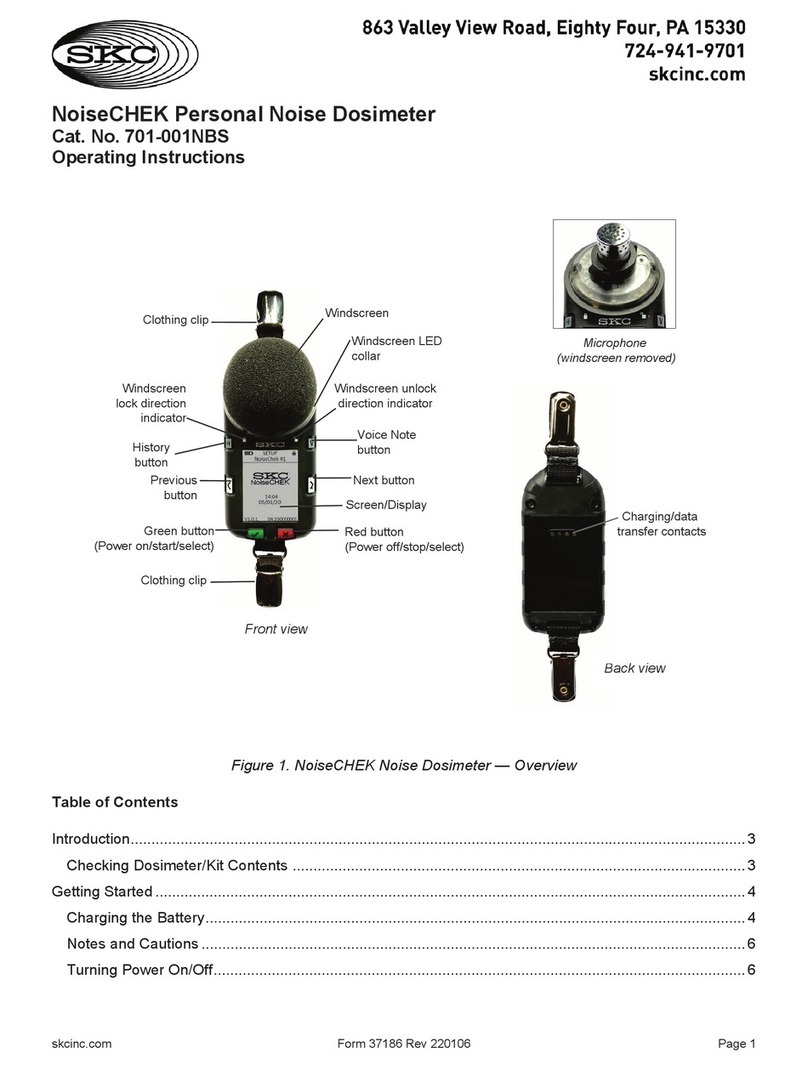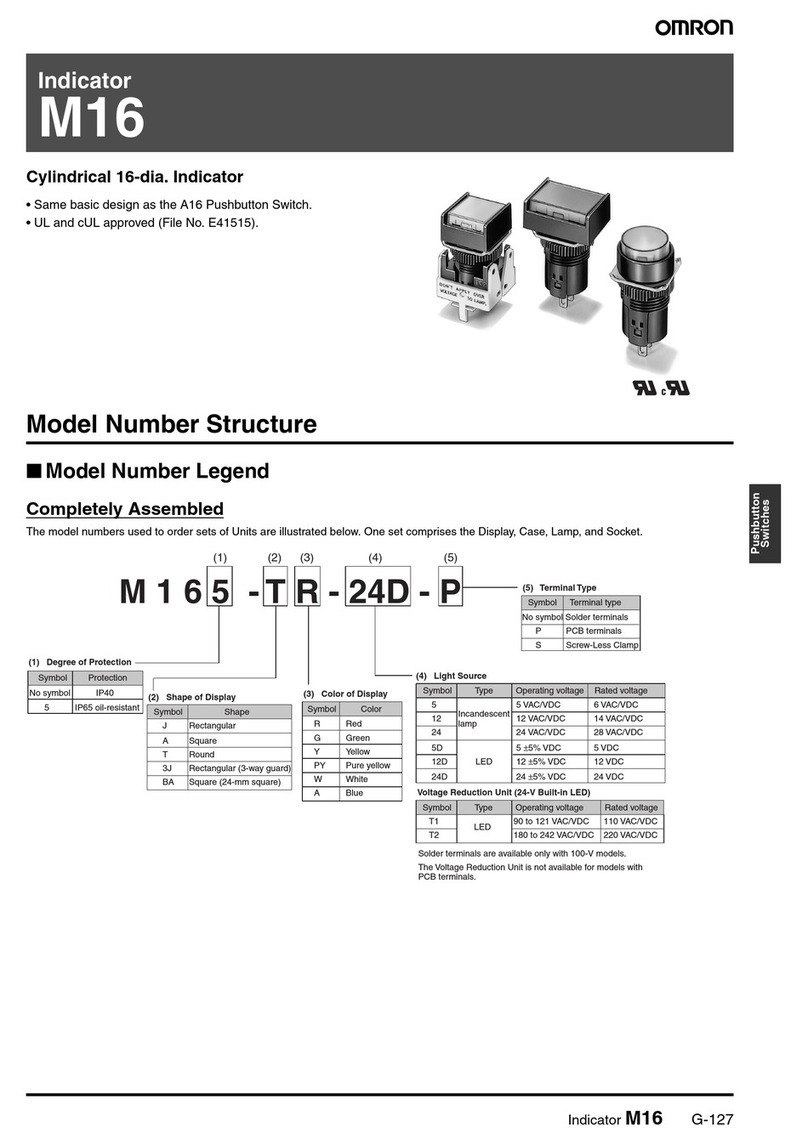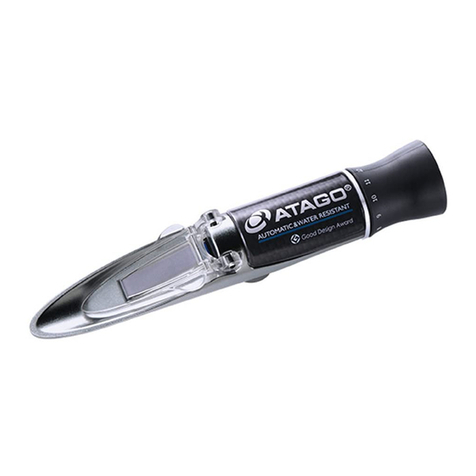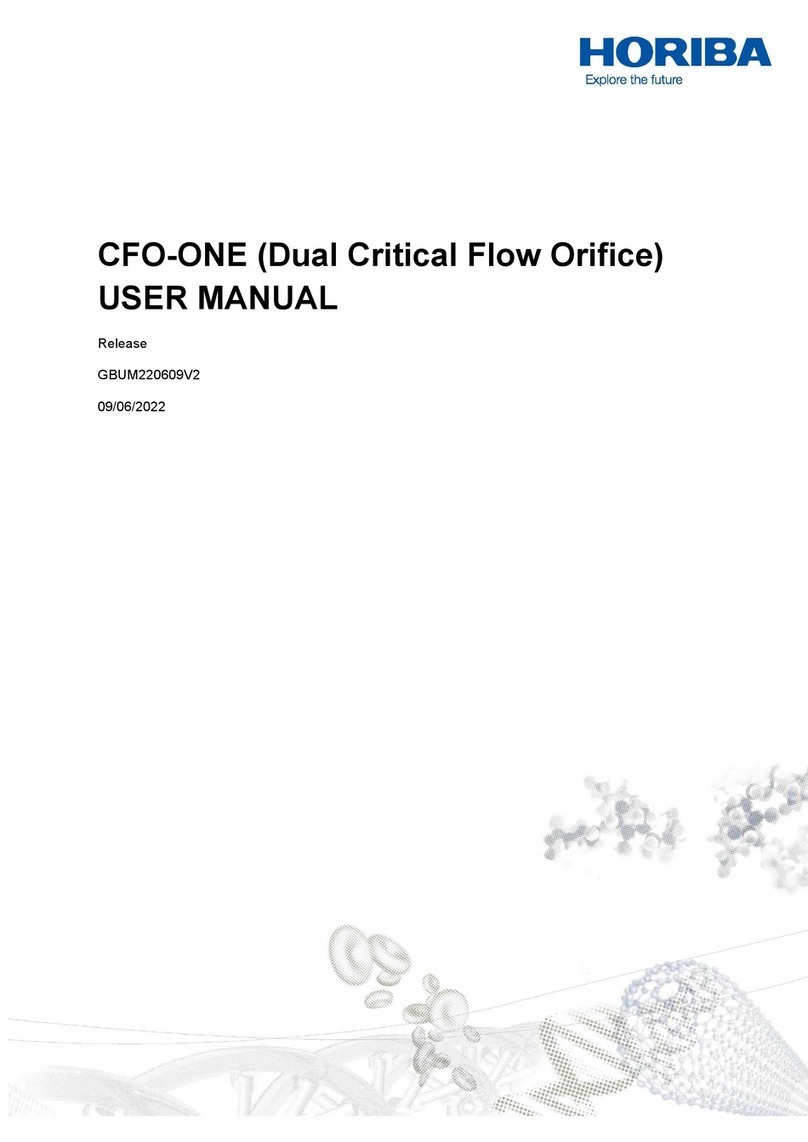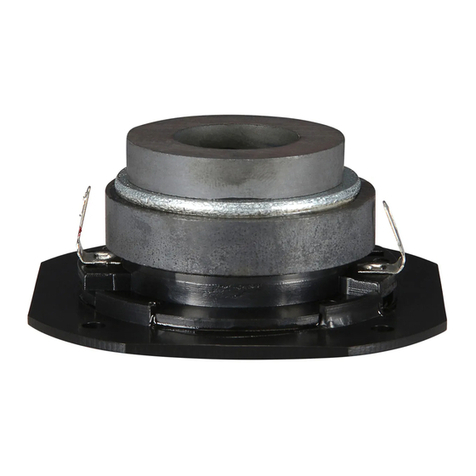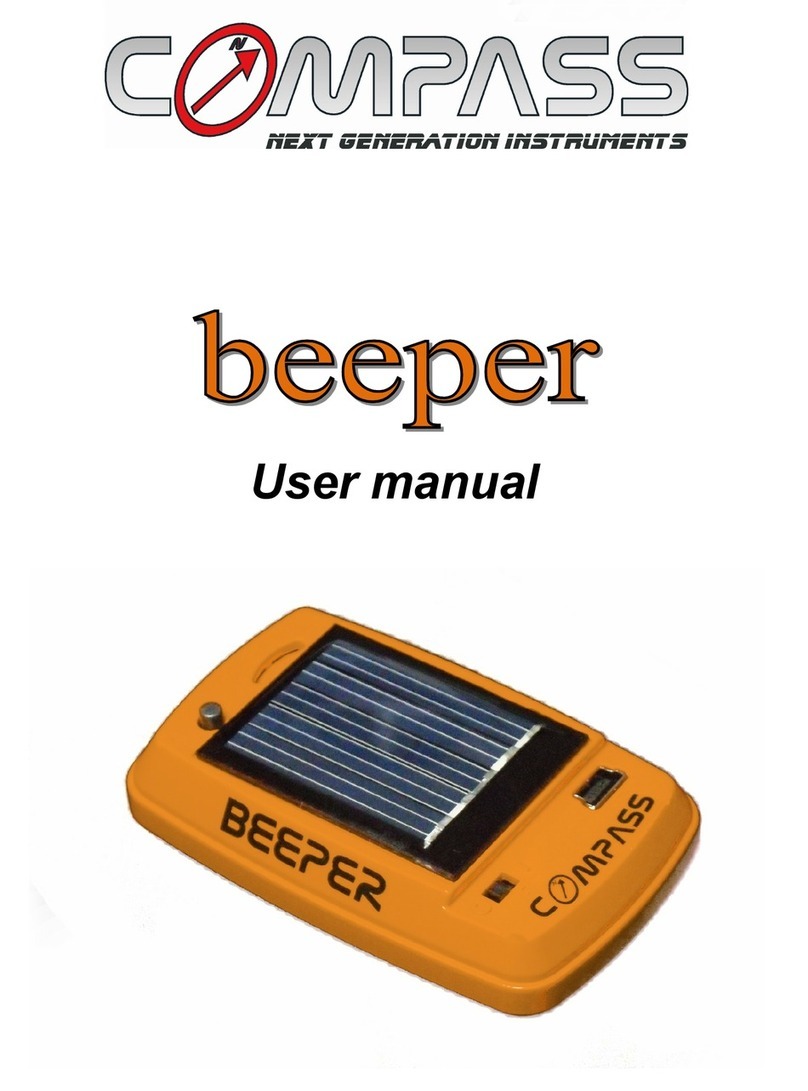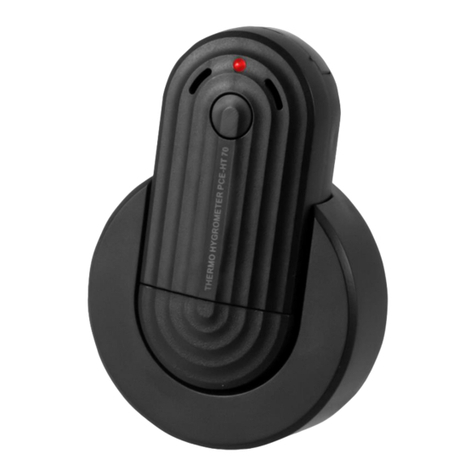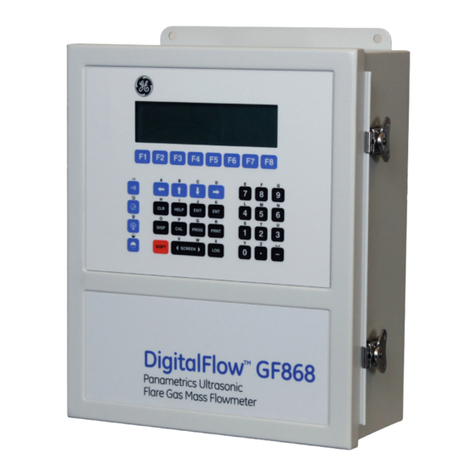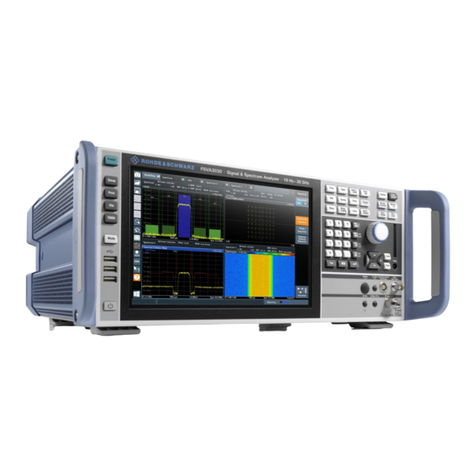SKC SoundCHEK User manual

skcinc.com Form 37177 Rev 200910 Page 1
SoundCHEK Essential Sound Level Meter
Cat. Nos. 702-001 and 702-002
Operating Instructions
Table of Contents
Introduction....................................................................................................................................................4
Checking Kit Contents...............................................................................................................................4
Parameters and Features..........................................................................................................................4
Microphone and Preamplifier.....................................................................................................................4
Removing the Microphone.....................................................................................................................4
Attaching/Removing the Preamplifier ....................................................................................................5
Certifiable Calibration ................................................................................................................................5
1/2-inch
microphone with
windscreen
Soft Key 1
Screen
Soft Key 2
Battery
compartment
(on back)
Arrow keys
(left/right, up/down)
OK
Record/Stop
Power on/off key,
reset, screen grab
Figure 1. SoundCHEK Essential Overview

skcinc.com Form 37177 Rev 200910 Page 2
Measuring Sound ......................................................................................................................................5
Sound Level –General Recommendations...........................................................................................5
Reflections .............................................................................................................................................6
Time Weighting......................................................................................................................................6
Frequency Weighting Filters..................................................................................................................6
Overload and Under Range...................................................................................................................8
Getting Started............................................................................................................................................10
Using the Keypad....................................................................................................................................10
Powering the Sound Level Meter ............................................................................................................10
Determining Battery Level.......................................................................................................................10
Turning Power On/Off..............................................................................................................................11
Interpreting Instrument Icons...................................................................................................................12
Operation.....................................................................................................................................................13
Real Time Mode ......................................................................................................................................13
Recording Mode ......................................................................................................................................13
Recording Screen Display ...................................................................................................................13
Time History Disabled..........................................................................................................................14
Time History Enabled...........................................................................................................................14
Time History Disabled, Duration Timer Set .........................................................................................14
Time History Enabled, Duration Timer Set..........................................................................................15
Stop Active Recording .........................................................................................................................15
File Review Mode....................................................................................................................................15
Auto Playback......................................................................................................................................16
Menu Structure........................................................................................................................................17
Menu Navigation and Settings ................................................................................................................18
Measurement Setup.............................................................................................................................18
File Manager........................................................................................................................................22
Load File ..............................................................................................................................................23
Delete File............................................................................................................................................24
Delete All Files.....................................................................................................................................24
Auto Playback......................................................................................................................................24
Templates ............................................................................................................................................25
Instrument Setup..................................................................................................................................25
Date......................................................................................................................................................26
Time.....................................................................................................................................................26
Bar Levels............................................................................................................................................27
Language.............................................................................................................................................28

skcinc.com Form 37177 Rev 200910 Page 3
Calibration............................................................................................................................................28
View History.........................................................................................................................................29
Information...........................................................................................................................................31
Measurement Screens ............................................................................................................................31
Measurements .....................................................................................................................................32
Measurements Table...........................................................................................................................33
Exposure..............................................................................................................................................33
Percentiles (LN)....................................................................................................................................34
Accessories/Replacement Parts.................................................................................................................35
Appendix A: Performance Profile................................................................................................................36

skcinc.com Form 37177 Rev 200910 Page 4
INTRODUCTION
Checking Kit Contents
If you ordered Cat. No.
Your package should contain
702-001
Class 1 meter, rubber boot, 4 AA batteries USB cable, wrist strap, windscreen, and
USB drive with manual, in a protective carry case
702-002
Class 2 meter, rubber boot, 4 AA batteries USB cable, wrist strap, windscreen, and
USB drive with manual, in a protective carry case
Parameters and Features
Template: All Parameters
Measurement 1:
LEQ, LMIN, LMAX, LE, LEP’d, LAVG, % Dose, % Dose per Hour, Exposure (Pa2h), TWA, L10, L90,
(L1, L5, L50, L95 or L99)
Measurement 2:
LEQ, LMIN, LMAX, LPEAK
Template: Environmental
Measurement 1:
LEQ, LMIN, LMAX, LE, L10, L90, (L1, L5, L50, L95 or L99)
Measurement 2:
LEQ, LMIN, LMAX, LPEAK
Template: Noise at Work
Measurement 1:
LEQ, LMIN, LMAX, LE, LEP’d, LAVG, % Dose, % Dose per Hour, Exposure (Pa2h), TWA
Measurement 2:
LEQ, LMIN, LMAX, LPEAK
Microphone and Preamplifier
Removing the Microphone
The microphone is fitted to the preamplifier by screwing the microphone in a clockwise direction ensuring
that the preamplifier spring pin is located centrally in the microphone.
To remove the microphone, unscrew in a counterclockwise direction.
The microphone has a protection grid which can also be unscrewed and removed, great care must be
taken to ensure that this is NOT removed.
Underneath the protection grid is the microphone diaphragm, which should never be
touched or be subject to dust or dirt. Doing so may damage the microphone beyond
repair or affect its acoustic response dramatically.

skcinc.com Form 37177 Rev 200910 Page 5
Attaching/Removing the Preamplifier
To attach the preamplifier (see below), position the RED orientation key on the preamplifier with the RED
identification mark on the sound level meter and gently push the preamplifier into the connector.
To remove, gently pull the preamplifier stem away from the instrument body.
Certifiable Calibration
The calibration process includes the microphone, preamplifier and sound level meter. Any change in this
measurement chain will require a new calibration certificate.
SKC offers a complete calibration service offering a NIST calibration that can be supplied with or without
a test report.
It is recommended that your sound meter instrumentation is calibrated annually to ensure your measuring
equipment is completely accurate and fully compliant.
Measuring Sound
•Always calibrate your SoundCHEK Essential sound level meter prior to and after taking
measurements using an SKC AcoustiCHEK Calibrator Cat. No. 703 Series.
Sound Level –General Recommendations
In some environments, high levels of noise can occur. The SoundCHEK Essential sound level meter has
been designed for complete accuracy up to sound levels of 140 dB.
Before you record measurements, take the time to ensure you have chosen the optimum range for the
application. Wherever possible, the optimum range is when the average measured signal is
approximately halfway between the top of the range and the bottom of the range without an overload
condition.
Preamplifier
Microphone
Only pull out and plug
in the preamplifier.
DO NOT TWIST

skcinc.com Form 37177 Rev 200910 Page 6
The SoundCHEK Essential will register an overload if the noise level exceeds the linear operating range
of the range selected by 0.5 dB, so it is advisable to determine if an overload will occur on the selected
range before measuring. In such cases, you will need to select a higher range to accommodate the higher
peak levels.
If the noise levels are 0.1 dB too low for the range selected, then the meter will display an under range
condition. Under these circumstances, you will need to select a lower range. For detailed information, see
Measurement Setup, Weightings & Range.
If measuring low level noise, be aware of the inherent noise levels caused by a combination of thermal
and electrical noise from both the microphone and the sound level meter. Measuring data that lies within
10 dB of the lowest quoted level on the lowest measuring range may be influenced by the self-noise of
the system.
Reflections
The sound level meter operator and the sound level meter itself can interfere with the measurements
being made, reflecting the noise signal. The instrument case for all SKC sound level meters has been
designed to minimize reflections while also being of rugged construction.
To minimize reflections from the operator, hold the sound level meter at arm’s length or mount the sound
meter on a suitable tripod.
Time Weighting
The time weighting is a time constant that modifies the response of the instrument to fluctuating noise
levels. Without time weighting the meter display would fluctuate following the measured noise level and
would be unreadable, the selected time weighting therefore softens these fluctuations over the time
periods described below and in doing so the meter has a more readable display.
All SoundCHEK Essential sound level meters use digital time weighting filters for higher accuracy. The
following standardized time weightings are available:
•Slow Weighting shows a slow rise in the Sound Pressure Level even for a sharp rise in the noise
level, likewise a rapid reduction in noise will be shown as a slow decrease in Sound Pressure
Level. The rise and fall times applied for Slow Weighting are 1 second.
•Fast Weighting is the most commonly used time weighting. It follows the noise level closer than
slow weighting by displaying a fast rise and fall in the Sound Pressure Level. The rise and fall
times applied for Fast Weighting are 125 milliseconds.
•Impulse Weighting allows your meter to show rapid rises in the noise level but has a very slow
decay. The rise and fall times for Impulse Weighting are 35 milliseconds and 1.5 seconds,
respectively.
Frequency Weighting Filters
Frequency Weightings are where the Sound Pressure Level is modified by use of filtering. All
SoundCHEK Essential sound level meters use digital frequency weighting filters for higher accuracy. The
following standardized frequency weightings are available; the frequency weighting curve for each one is
shown in the graph below.

skcinc.com Form 37177 Rev 200910 Page 7
A Weighting
The SPL is filtered in such a manner as to reflect the hearing response of a human ear. The signal is
progressively attenuated at the higher and lower ends of the audible frequency range but much more
attenuation occurs at the lower end of the audible frequency range. Generally, this is the most commonly
used frequency weighting.
C Weighting
The signal is progressively attenuated at the higher and lower ends of the audible frequency range,
however, the attenuation at the lower end is much less than with A Weighting. The response has a flat
area between 200 and 1250 Hz and has -3 dB points at 31.5 Hz and 8kHz. It is generally used for the
acoustic emissions of machinery and for peak sound levels.
Z Weighting
Often referred to as the FLAT or LIN response, this weighting has a virtually flat response over the entire
audible frequency range.
Z Weighting
A Weighting
C Weighting
-60
-50
-40
-30
-20
-10
0
10 100 1000 10000 100000
dB
Frequency
Frequency Weighting Curves

skcinc.com Form 37177 Rev 200910 Page 8
Overload and Under Range
As mentioned in Sound Level –General Recommendations, the SoundCHEK Essential will register an
overload if the noise level exceeds the current measurement range and will register under range if the
noise levels are too low for the current range.
The SoundCHEK Essential will display these events as “OL” (overload) and “UR” (under range) in bold
red lettering or inside a red box. They will always be displayed in the same place on each measurement
screen. See the table on the next page.
Under range on each measurement acts independently and under some conditions may display under
range on only one measurement. Overload does not act this way and will display an overload for both
ranges.
During overload or under range conditions, the bar displayed at the bottom of the measurement home
screen will change to grey, indicating that operation is outside of the current range.

skcinc.com Form 37177 Rev 200910 Page 9
Overload
Under Range

skcinc.com Form 37177 Rev 200910 Page 10
GETTING STARTED
Using the Keypad
Powering the Sound Level Meter
The sound level meter can be powered from four 1.5V AA size batteries, four 1.2V
rechargeable batteries, or the micro USB connection via a USB port or power supply
capable of delivering 0.5 A.
The battery compartment is located on the back of your sound meter. Remove the
battery door and insert the batteries using the correct polarity shown where the
batteries are fitted (see right).
Replace the battery door securely before using the instrument.
Determining Battery Level
The SoundCHEK Essential is equipped with a multi-level battery indicator:
Soft Key 2
(Home/Filter/
Select Yes)
Soft Key 1
(Menu/Select
No/Exit/Back)
Directional
arrow keys: up,
down, left, right
OK, Record/Stop
Power, reset, or
screen grab
100%
20%
10%
5%

skcinc.com Form 37177 Rev 200910 Page 11
At approximately 5% charge, the battery indicator will FLASH RED. If the batteries are not replaced, the
unit will automatically shut down and save the recording if necessary.
Turning Power On/Off
Turn on: In all power configurations, press and hold the Power key for approximately one second.
Turn off: Hold the Power key down for approximately two seconds and follow the on-screen instructions
shown below.
Note: If no key is pressed within two minutes of turning on the sound level meter, the unit will
automatically power down. See below.

skcinc.com Form 37177 Rev 200910 Page 12
Interpreting Instrument Icons
Several icons are used on the sound level meter to easily identify the functionality or useful settings of the
instrument.
L
Low Measuring Range Active
M
Medium Measuring Range Active
H
High Measuring Range Active
USB Active
Battery Charge
Recording Data Active
File Review Active
The top dark orange bar on the screen displays most of the information icons, the current time, date,
measurement range and the current screen selected.
.
The bottom, lighter, orange bar will display the Record or File Review symbols in a similar position to the
image shown at right. Note: The image shown here may have different values than those on your display.

skcinc.com Form 37177 Rev 200910 Page 13
OPERATION
The SoundCHEK Essential sound level meter has three primary operational modes:
•Real Time
•Recording
•File Review
Each mode can be quickly identified by viewing the bottom bar: Real Time has no icon, Record has a
standard red record symbol, and File Review shows a green directional arrow.
Real Time Mode
This is the standard mode of operation for the sound level meter.
The menu system can be accessed while in real time mode and the instrument settings can be changed if
required.
Measurement screens are accessible but not all parameters all available while real time mode is active.
It is possible to reset parameters in real time mode by quickly pressing the Power Key.
Recording Mode
Recording data is achieved by pressing the Record key while in real time mode. The settings for
recording are applied under Measurement Setup, Data Recording.
Recording Screen Display
The settings made under Data Recording will affect the information and how it is displayed on your
SoundCHEK Essential instrument.
Real Time
Record
File Review

skcinc.com Form 37177 Rev 200910 Page 14
Time History Disabled
If Time History is not enabled for the recording, the bottom bar will only indicate the elapsed recording
time.
Time History Enabled
When Time History is enabled for the recording, the bottom bar will display the elapsed recording time
and the current interval countdown time.
Time History Disabled, Duration Timer Set
When Time History is disabled for the recording but the Duration Timer is enabled, the bottom bar will
only display the elapsed recording time.
Elapsed recording time
Interval countdown time
Elapsed recording time
Elapsed recording time

skcinc.com Form 37177 Rev 200910 Page 15
Time History Enabled, Duration Timer Set
When both Time History and Duration Timer are enabled for the recording, the bottom bar will display the
elapsed recording time and the current interval countdown time.
Stop Active Recording
Pressing the Stop key during an active recording will display the available options:
Save:Select Yes by pressing Soft Key 2.
Don’t Save:Select No by pressing Soft Key 1 to return to Real Time mode.
File Review Mode
File Review can be accessed by either manually loading a file under File Manager, or by enabling the
Auto Playback function (see Auto Playback).
1. Use the Up or Down Arrow keys to scroll measurement screens or the Left or Right Arrow keys
to scroll measurement parameters.
2. Use Soft Key 2 to swap between measurement 1 or measurement 2.
3. Use the Left or Right Arrow keys to scroll parameters.
4. Select Exit using Soft Key 1 to quit File Review and return to Real Time mode.
Interval countdown time
Elapsed recording time
Recording start time
Recording date

skcinc.com Form 37177 Rev 200910 Page 16
Auto Playback
Auto Playback is located in the File Manager section of the Main Menu and can be enabled or disabled
by pressing OK. When enabled, after a recording has been saved, your SoundCHEK Essential will
automatically enter File Review instead of returning to Real Time mode.

skcinc.com Form 37177 Rev 200910 Page 17
Menu Structure

skcinc.com Form 37177 Rev 200910 Page 18
Menu Navigation and Settings
The Main Menu can be selected using Soft Key 1 when labelled as Menu.
On most screens in the SoundCHEK Essential menu system, Soft Key 1 can be used to go back to the
previous screen. This will be displayed as the symbol when available.
Similarly, Soft Key 2 can be used to go back to the measurement screen; this will be displayed as Home
when available. Scroll through the available options using the Up or Down Arrow keys and press OK to
choose the highlighted selection.
Note: The Main Menu is not available when the sound level meter is recording.
Measurement Setup
Select Measurement Setup to change your recording settings and how information is displayed.
Scroll through the available options using the Up or Down Arrow keys and
press OK to choose the highlighted selection.
Weightings & Range
Select Weightings & Range to change the measurement range and the weightings applied to each
measurement.
Scroll through the available options using the Up or Down Arrow keys and use the Left or Right Arrow
keys to change the selection.

skcinc.com Form 37177 Rev 200910 Page 19
Range: SoundCHEK Essential has three operating ranges: Low, Medium, and High. Each range
measures linearly, with Low measuring 25 to 100 dB, Medium measuring 45 to 120 dB. and High
measuring 65 to 140 dB.
Frequency Weighting: SoundCHEK Essential simultaneously measures sound on Measurement 1 and
Measurement 2, and each one has different Frequency Weightings applied.
Measurement 1 is locked to ‘A’ weighting, however, Measurement 2 can be moved freely among ‘A’, ‘C’
and ‘Z’ weightings.
Time Weighting: Both Measurement 1 and Measurement 2 can also have independent Time Weightings
applied. Select from ‘S’ - Slow, ‘F’ - Fast or ‘I’ - Impulse weightings.
Data Recording
Select Data Recording to enable Time History and to choose any time interval periods required.
The time periods recorded by the instrument are determined by the Time History settings, the settings
made within the Timer Selection or by the user manually stopping the recording.
If the Duration Timer has been set under Timer Selection, this will be shown on the Data Recording
screen as the Total Record Time. If no settings are made with Timer Selection, then Not Set will be
shown.

skcinc.com Form 37177 Rev 200910 Page 20
1. Scroll the available options using the Up or Down Arrow keys.
2. Press OK or the Left, Right Arrow keys to toggle Time History On.
3. Use the Left or Right Arrow keys to amend the values for Short Time Interval and Long Time
Interval.
4. Press the OK key to select Timer Selection.
Time History On –Disabled: If Time History On is disabled, then all data recordings made will not
contain any Time History data and the Interval settings become unavailable.
In this case, the instrument will record one set of measurements over the total measurement time.
Time Interval: When Time History On is enabled, each recording will calculate data over the Time
Interval selected. The available options for Time Intervals are 1s, 10s, 1m, 5m, 10m, 15m, 30m, 1hr, 8hr,
12hr.
Note: Calculations over Time Intervals are not displayed on screen.
Timer Selection: Choose Timer Selection to set the overall automatic recording length.
1. Press OK to enable the Duration Timer.
2. With the option enabled, use the Left or Right Arrow keys to move and highlight the selection to
change.
3. Use the Up or Down Arrow keys to change the selection. The Duration Timer can be used with
or without Time History enabled.
The settings can be changed from: 00 to 23 HRS, 00 to 59 MIN, 00 to 59 SEC
This manual suits for next models
2
Table of contents
Other SKC Measuring Instrument manuals
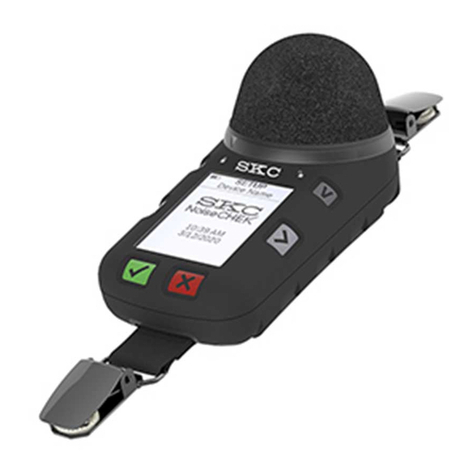
SKC
SKC NoiseCHEK User manual
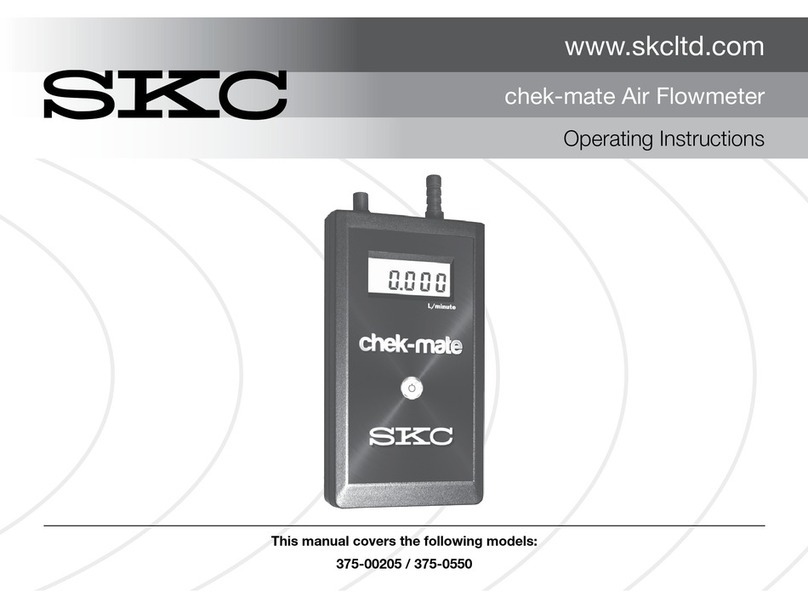
SKC
SKC chek-mate User manual
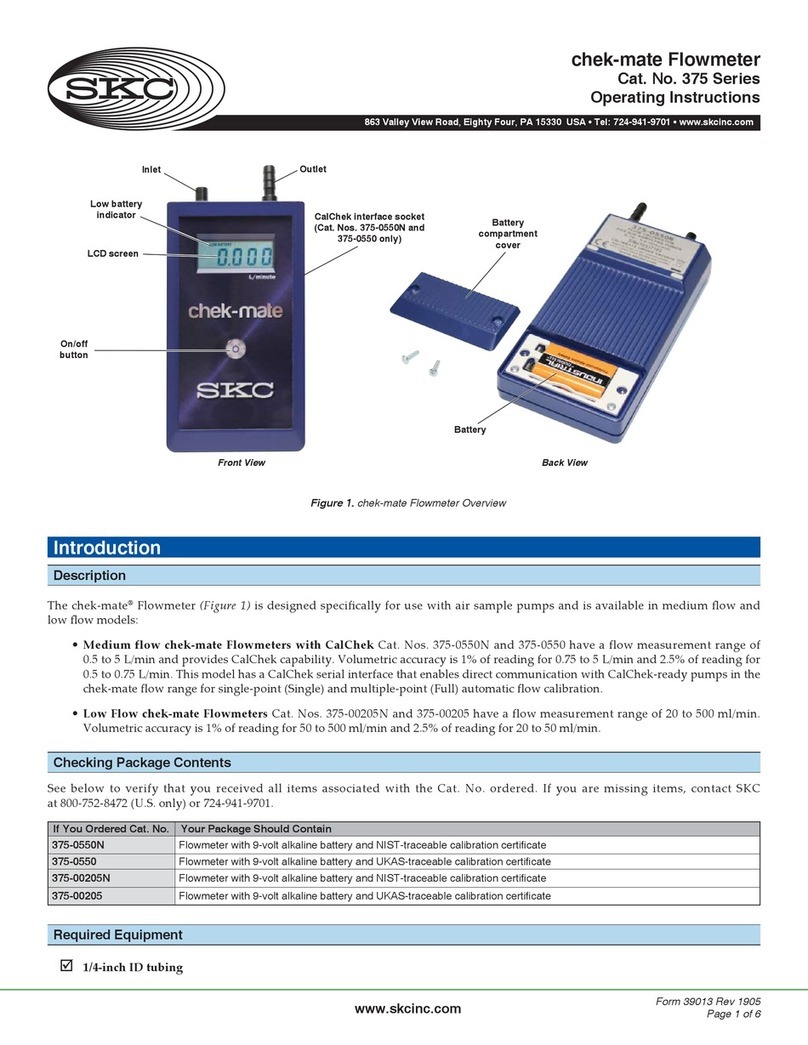
SKC
SKC chek-mate 375 series User manual
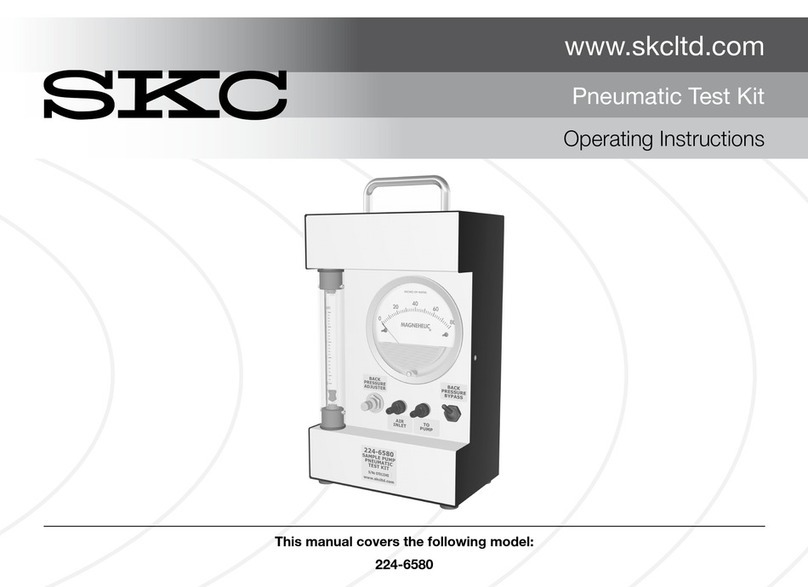
SKC
SKC 224-6580 User manual

SKC
SKC chek-mate 375 series User manual
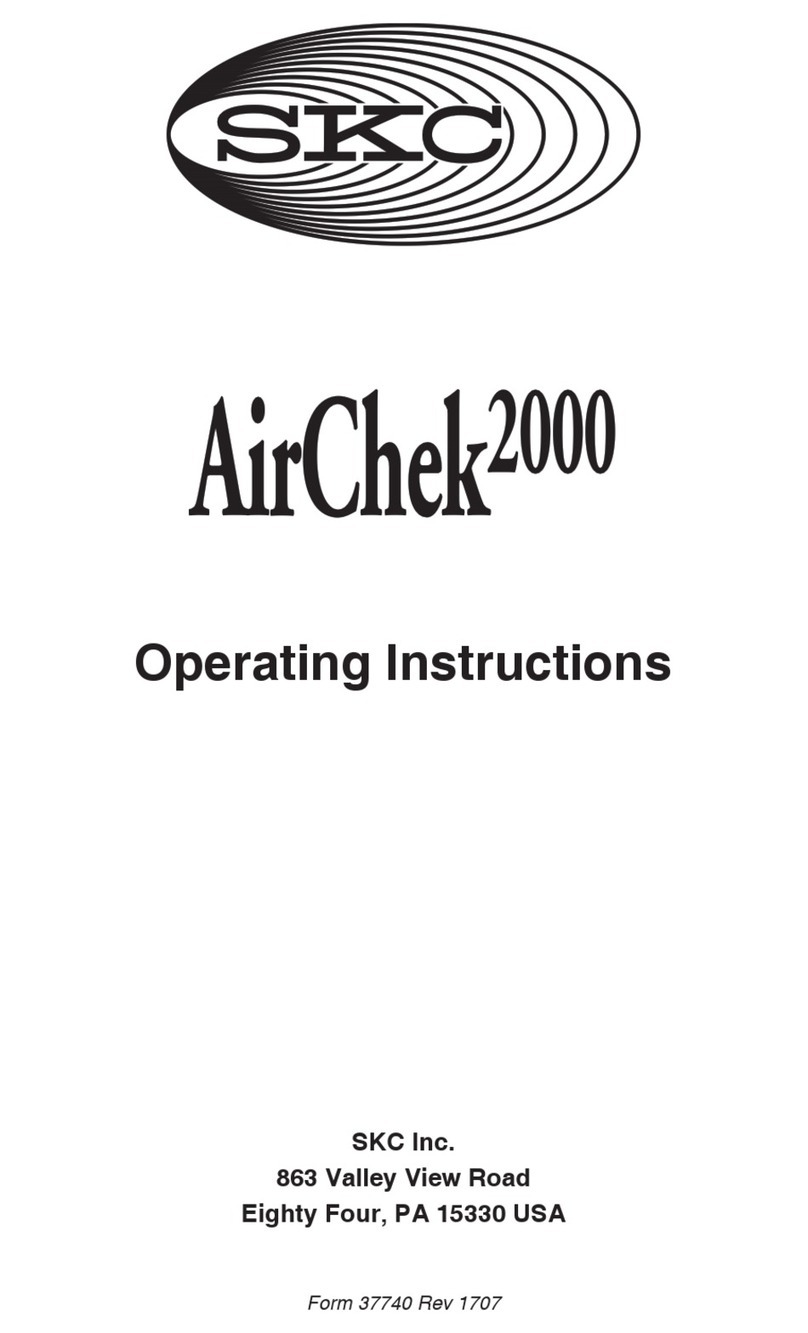
SKC
SKC AIRCHEK 2000 User manual
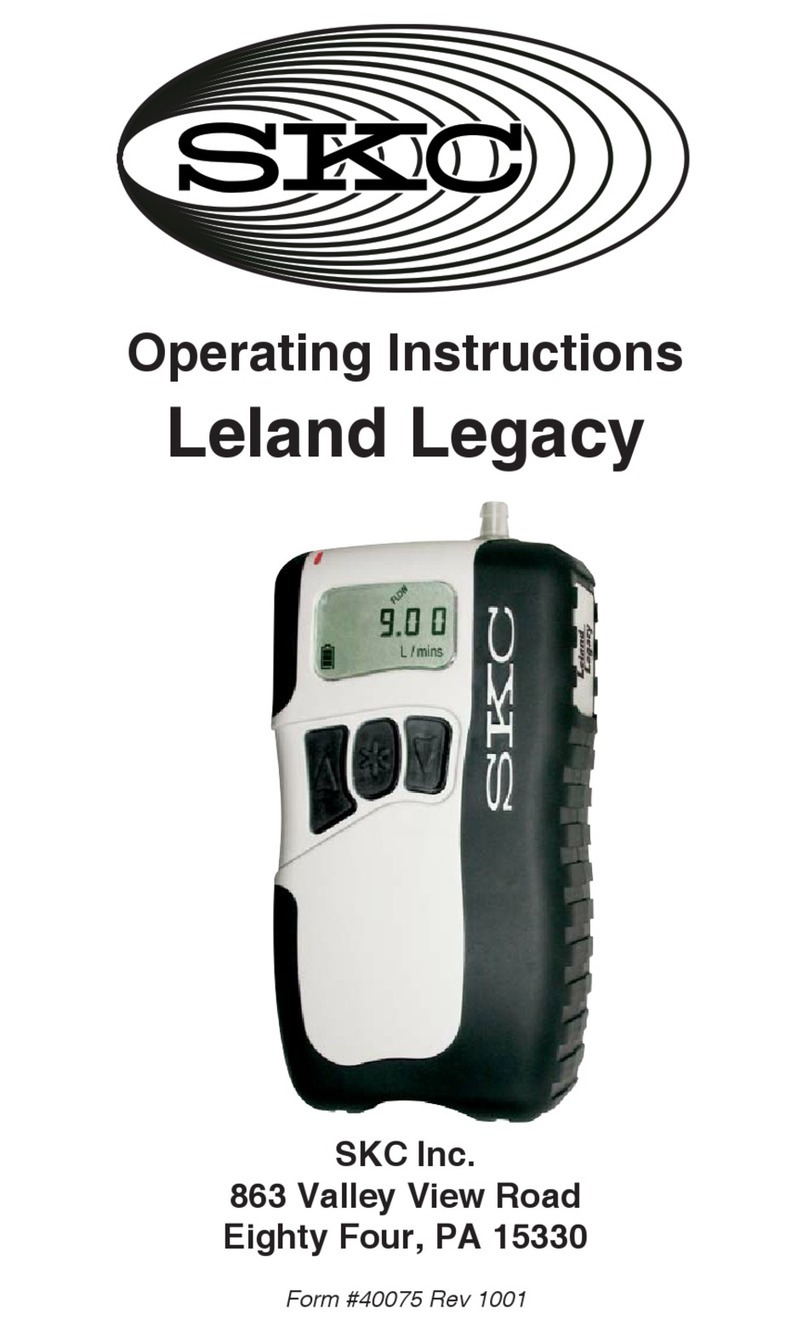
SKC
SKC Leland Legacy User manual
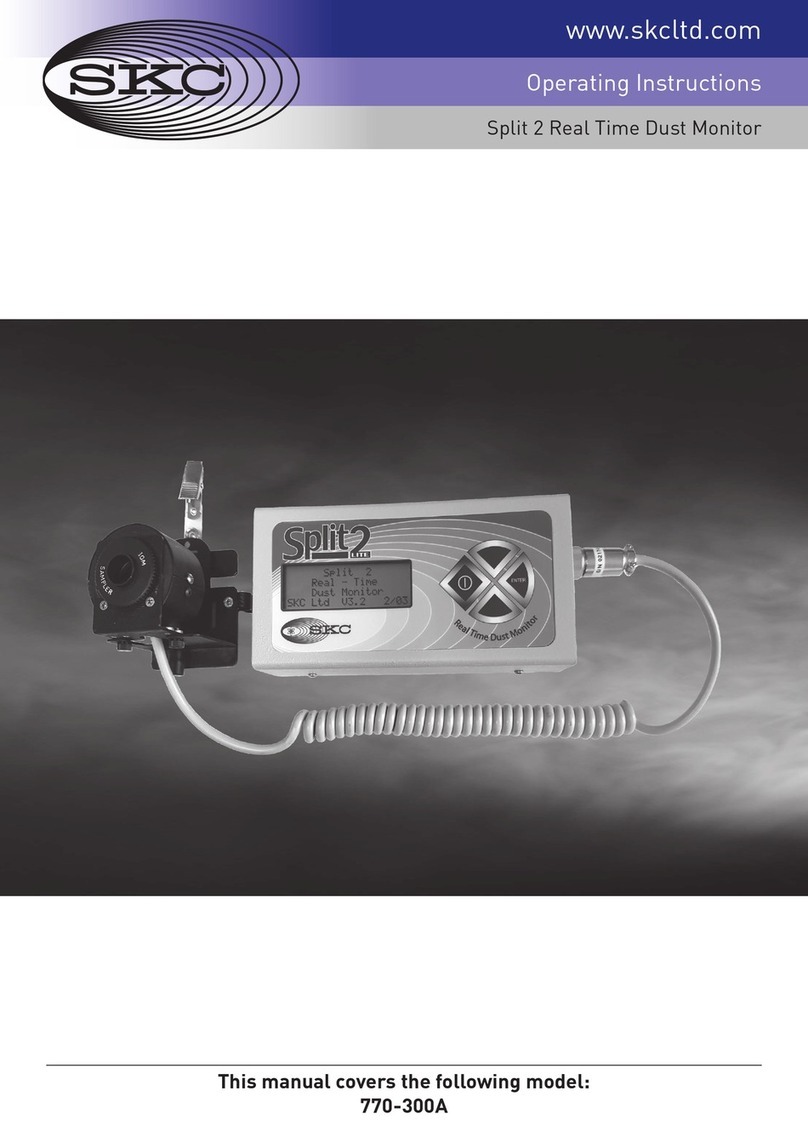
SKC
SKC Split 2 User manual
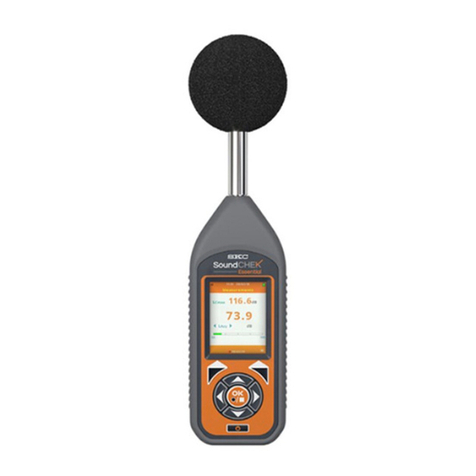
SKC
SKC SoundCHEK 702 Series User manual

SKC
SKC chek-mate User manual
Popular Measuring Instrument manuals by other brands
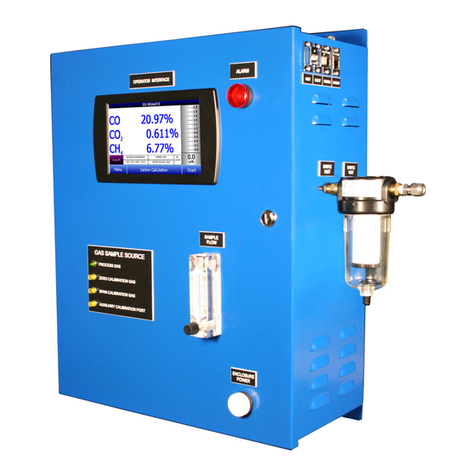
Super Systems
Super Systems MGA 6010 Operation manual

Thermo Scientific
Thermo Scientific Orion Versa Star user manual

PRONIVO
PRONIVO PNR21 quick start guide
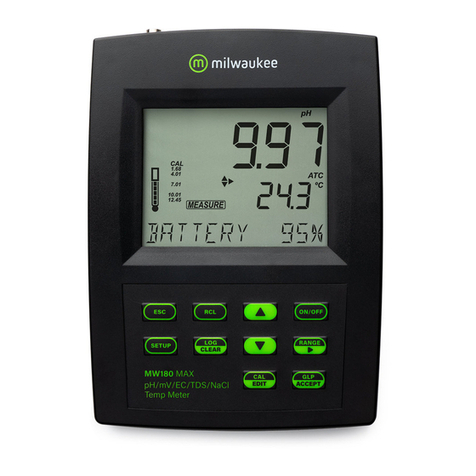
Milwaukee
Milwaukee MW180 MAX instruction manual
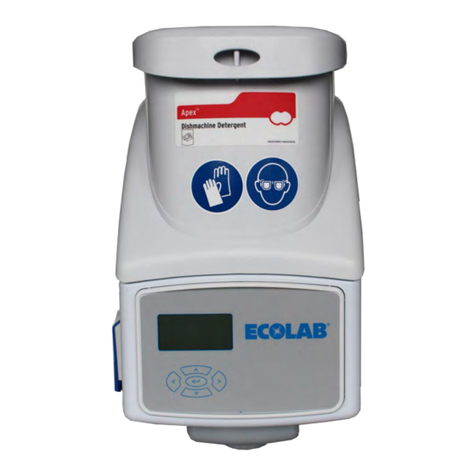
Ecolab
Ecolab EcoPlus PDRX Short operating instructions

Reliance Controls
Reliance Controls THP401 owner's manual
